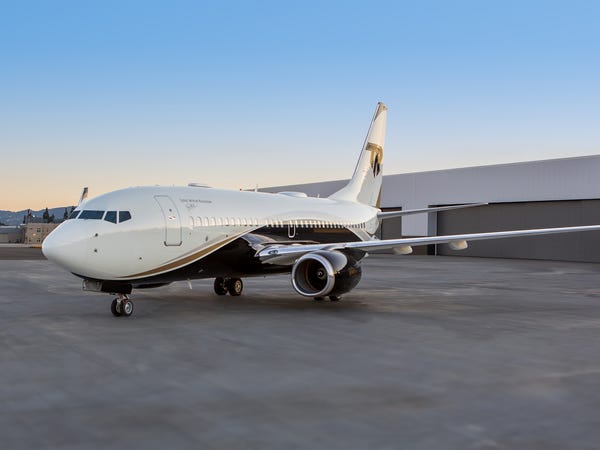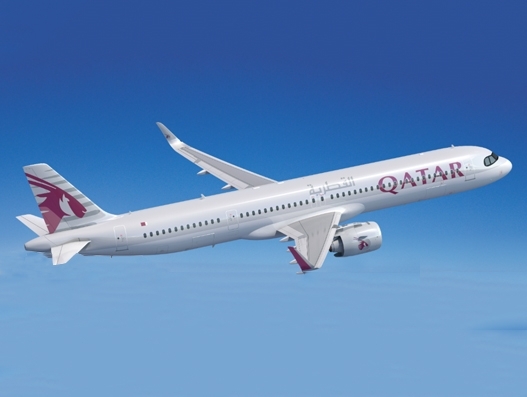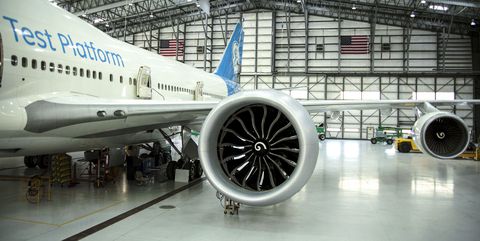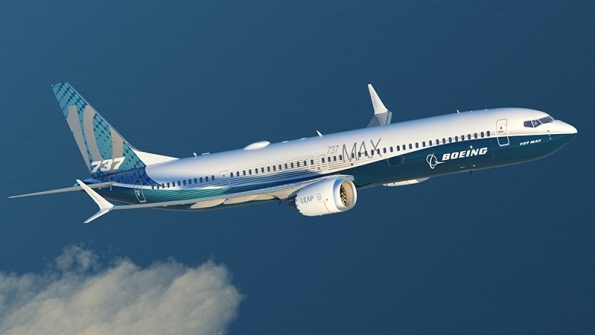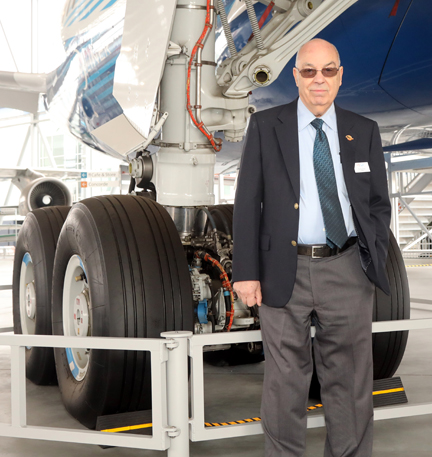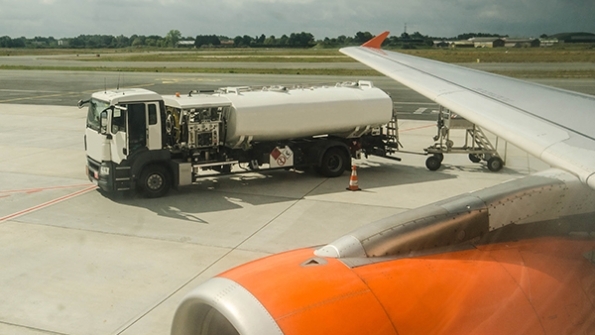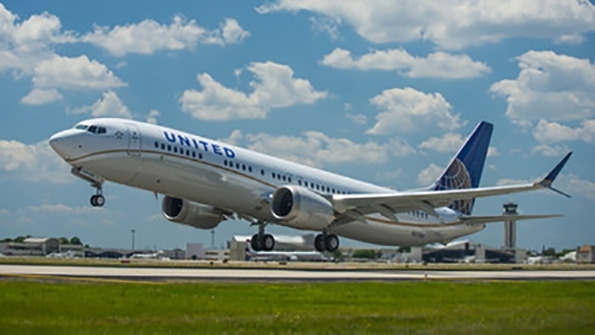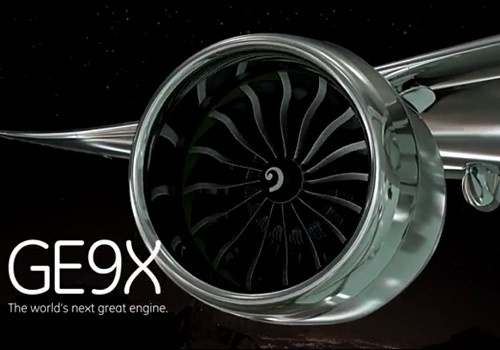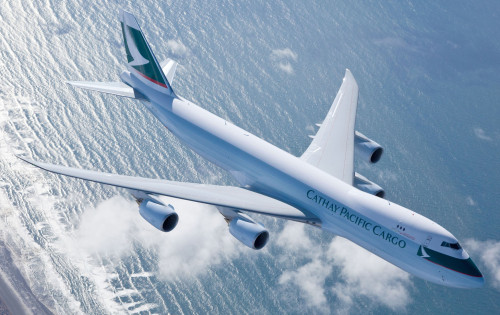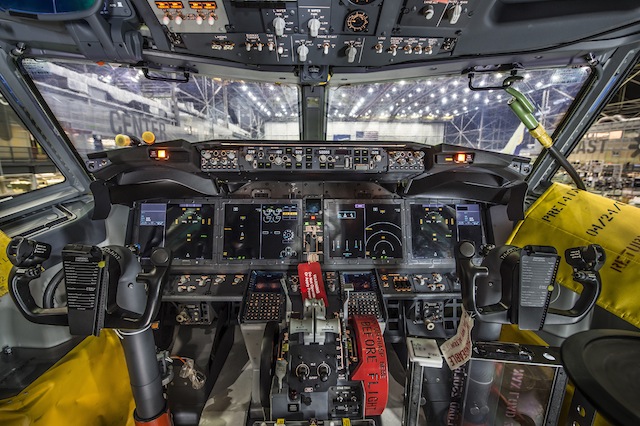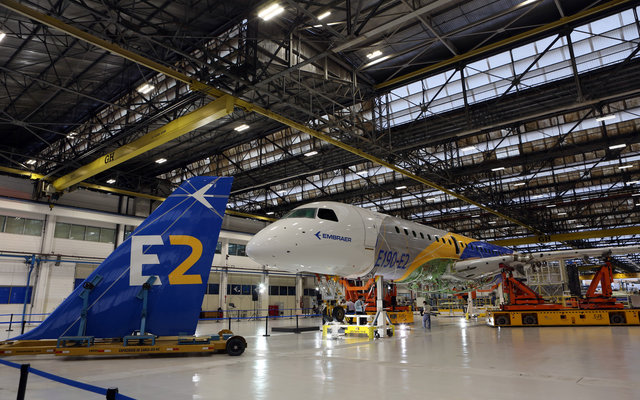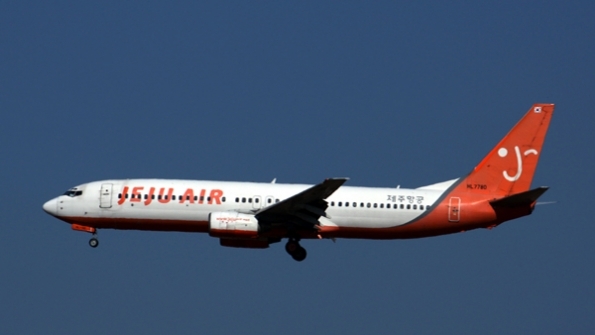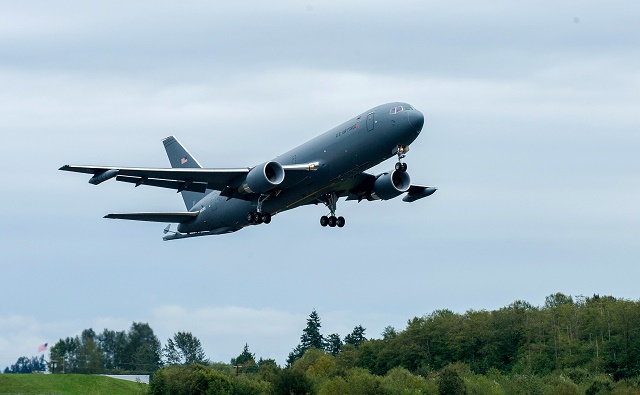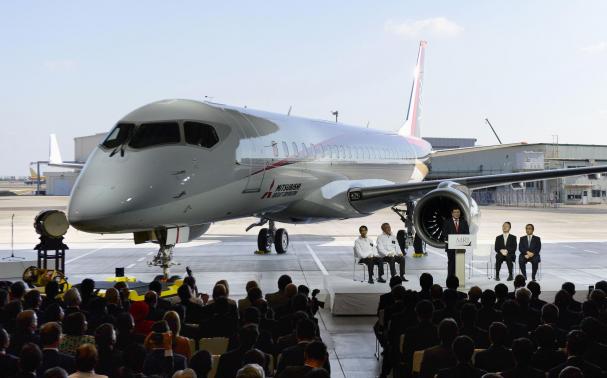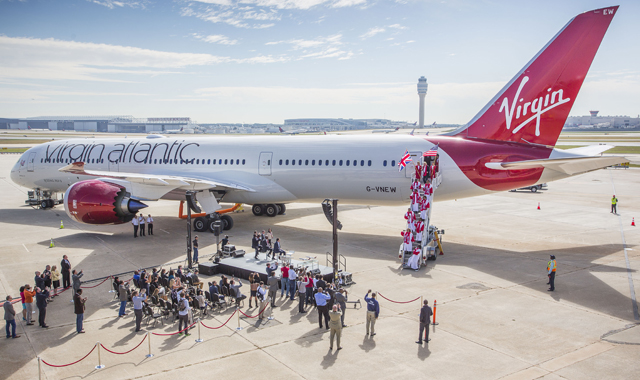On The Boeing Front
Boeing Commits to Deliver Commercial Aircraft Ready to Fly on 100% Sustainable Fuel
Boeing has committed that its new commercial aircraft will be able to burn 100% sustainable aviation fuels by 2030. Boeing has previously conducted successful test flights replacing petroleum fuels to address the urgent challenge of climate change.
Boeing says it continues to study other carbon-reducing technologies, such as hybrid-electric and hydrogen propulsion systems.But it describes sustainable aviation fuel(SAF),which includes biofuel, as the prime means by which the sector can reach IATA’s goal of,2050 cutting airline emissions to half of 2005 levels.
“Our industry and customers are committed to addressing climate change and sustainable aviation fuels are the safest and most measurable solution to reduce aviation carbon emissions in the coming decades,” said Boeing Commercial Airplanes President and CEO Stan Deal. ”We are committed to working with regulators engine companies and other key stakeholders to ensure our airplanes and eventually our industry can fly entirely on sustainable jet fuels”.
Boeing has been a pioneer in making sustainable aviation fuels a reality, partnering globally with airlines, industry governments and research institutions to expand limited supplies and reduce the fuels’ cost. Boeing worked with airlines, engine manufacturers and others to conduct biofuel test flights starting in 2008 and gain approval for sustainable fuels in 2011. In 2018, the Boeing ecoDemonstrator flight-test program made the world’s first commercial airplane flight using 100% sustainable fuels with a 777 Freighter, in collaboration with FedEx Express.
Source: Boeing/Picture Neste
ON THE AIRBUS FRONT
Airbus Puts the Brakes on A320 Rate Increases
“Airbus will slow a planned increase in A320-family production as it reacts to further demand pressure created by the Covid-19 pandemic,” the company said on Thursday January 21, 2021. The expected gradual increase from the current rate of 40 A320s per month will now increase to 43 per month in the third quarter and 45 in the fourth quarter, compared with previously planned jump to 47 of the narrow bodies starting in July.
The Company’s A220 monthly production will increase from four to five aircraft per month starting at the end of the first quarter as previously planned. Wide body output remains at current levels. Airbus also said it will postpone a potential increase for the A350 and maintain its five-per- month rate. A330 will remain at two-per-month for the foreseeable future.
“Airbus continues to monitor the market closely,” said the company in a statement. ”With these revised rates, Airbus preserves its ability to meet customer demand while protecting its ability to further adapt as the global market evolves.
Airbus expects the commercial aircraft market to return to pre-Covid levels by 2023 to 2025.”
Source: Airbus/Picture Airbus
REGIONAL/BUSINESS JETS
De Havilland Set to Pause Dash 8 Q400 Production
De Havilland Canada (DHC) is set to pause production once the current Dash 8-400 is completed the company indicated. Currently, De Havilland has 17 Dash 8-400 orders scheduled for customers in 2021. There are two more Dash 8s in the backlog without identified customers.
“We will continue to sell, deliver and support the Dash 8-400 while taking appropriate measures to safeguard our people and business,” said DHC in a statement to Aerotime News. ”Our manufacturing operations have capacity to produce aircraft at our Downsview facility into 2023. However, we will not be producing “whitetails” and market demand will guide our future production plans for the Dash 8-400 Aircraft.”
In October 2020, two Dash 8-400 aircraft were delivered to Ethiopian Airlines, including the airline’s 30th Dash 8-400 aircraft.
Source: De Havilland/Picture De Havilland
F/List To Develop Cabin Features for Aerion’s AS2 Supersonic Jet
Aerion has selected high-end interiors manufacturer F/List to supply the AS2 supersonic business jet. The agreement builds on a relationship that has been ongoing between F/List and Aerion since 2014. F/List already has provided Aerion with expertise in interior engineering, certification support, materials and process, and finishes.
Under the expanded agreement, F/List will work with Aerion to develop an ”innovative, ultra-luxury cabin experience” to include cabinets, liners, hard floorings, and baggage liners.
“The AS2 will be a step into the future for passenger experience and the cabin will link emerging technologies, new materials, visionary style, traditional craftsmanship to create the future of luxury,” said Tim Fagan, the director of industrial design for Aerion.
Source: Aerion/Picture Aerion
OTHER AVIATION NEWS
Saudia the National Flag carrier of Saudi Arabia Introduces comprehensive Flight Guide in Braille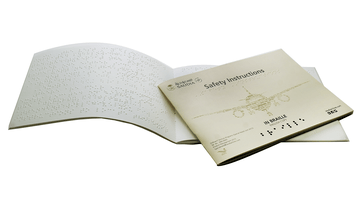
Saudia has become the world’s first airline to introduce a comprehensive flight guide in braille for visually-impaired and blind passengers. The airline features Braille entertainment options include audio descriptive movies.
Guests can select a Braille cuisine option at time of booking through a simple step while making a booking from the airline’s website or calling SAUDIA. The airline provides services such as elevators, special meals and menus, safety procedures and magazines printed in Braille for guests.
Chief executive officer of Saudi, Captain Ibrahim S. Koshy said: “Saudia is committed to being an inclusive airline, providing amenities, services and support for all guests. We take pride in making our very best efforts to provide a comfortable, welcoming and hospitable experience from each point of the journey.”
Source: Saudia/Picture Saudia
First UK Wedgetail Arrives for Conversion By STS 
A former Deer Jet-operated Boeing 737NG will be modified into an E-7 Wedgetail airborne early warning (AEW) aircraft for the Royal Air Force (RAF); it arrived at its UK conversion site earlier last month.
Currently registered N946BC, the narrowbody arrived at the Birmingham airport facilities of STS Aviation Services on January 7th, following a 6 hour flight from Bangor, Maine, in the USA.
Cirium fleets data recorded the twinjet as having previously been operated in a 737-BBJ1 configuration with 29 seats. First flown in June 2010, before undergoing conversion for VIP operations, it was used by Deer Jet under registration B-5273-via China’s AVIC international leasing-before being acquired by Boeing in June 2019.
Boeing Defence UK managing director Anna Keeling describes the milestone as a “major accomplishment”. “While hundreds of people throughout the UK and around the world have been working on this program since the contract was signed, we now have the airframe that will become the RAF’s first Wedgetail in the country,” she notes.
The Other pre-owned asset scheduled to undergo conversion for the RAF as also originally ordered by Deer Jet, now registered as N947BC and first flown in June 2011, the platform saw use with Deer Jet’s sister operators Hong Kong Jet, and business Aviation services Guernsey, as well as Bermuda firm Longtail Aviation, Cirium fleet records show.
In addition to these two airframes, the UK will also field a trio of new build 737-700s, to complete its E-7 fleet. Ordered via $2 billion acquisition to replace aged E-3D Sentry airborne warning and control system aircraft, the fleet will be based at RAF Lossiemouth in Scotland, alongside the Raf’s 737NG-based P-8A Poseidon MRA1 maritime patrol aircraft.
Source: Flightglobal/Cirium Fleets Data/picture Boeing Defence UK
Qantas to Revisit Project Sunrise at End of 2021: Alan Joyce
Qantas chief executive Alan Joyce believes the carrier’s Project Sunrise initiative to launch ultra-long haul flights will be even more viable in the post-coronavirus world. Joyce adds that plan will be revisited at the end of 2021, potentially setting the stage to launch services from Melbourne and Sydney to London and New York.
As the Covid-19 pandemic grew more severe, in May, 2020, Qantas pressed pause on Project Sunrise. The initiative could have seen it order up to 12 Airbus A350-1000s. “We were pretty close…within a couple of weeks of placing orders for the aircraft,” says Joyce.
He adds that Airbus would have provided a “specially designed version” of the -1000 “to allow us to do these sectors economically and the business case looked really good.”
Joyce made the remarks during an interview on the Reuters Next virtual conference.
“I am optimistic that the Project Sunrise business case will still look good,”says Joyce, “But we’re obviously not going to put an order in for new aircraft until we see the international markets recovering.”
Source: Reuters/Picture Qantas
LATEST NEWS
- Gulf Air is in talks with Airbus and Boeing to delay some aircraft deliveries as the pandemic continues to disrupt global travel.
- WestJet of Canada returned the Boeing 737 Max to revenue service on January 21st with a flight from Calgary to Vancouver; becoming Canada’s first airline to fly the aircraft commercially following an almost two-year pause.

- FedEx US cargo giant plans to retire its remaining MD-11s by 2023. Over the years, the MD-10s were the workhorse of FedEx’s fleet.
- Alaska Airlines took delivery of its first Boeing 737 Max on January 14th, it will mark the first of 68 units of the narrowbody to join the carrier this decade.
- American Airlines continues to reactivate its 737 Max fleet post grounding, the airline on January 20th set to exceed 200 flights of the type. It is now operating up to 23 flights with the type each day.
- China Aircraft Leasing(CALC) has placed an order for 30 Comac ARJ21 aircraft with an Indonesian airline, TransNusa in which CALC and two of its most senior executives have a 49% takes a co-buyer.
- Frontier Airlines has selected Pratt & Whiney PW1100Gs to power 134 incoming Airbus A320neo family jets a move that will diversify its fleet way from complete reliance on CFM International power plants.

- United Airlines revealed the first 12 routes that its Boeing 737 aircraft will fly. Starting with 24 daily departures, with that number quickly growing to 32.

- Jordan Aviation has filed an application with the US Transportation Department ( Dot) to begin flights between Jordan and the US. The privately owned airline, which primarily provide wet lease services and charter flights, is seeking a foreign air carrier permit to start scheduled US flights from April 1.

Sources: United Airlines, Frontier Airlines, Alaska Airlines, Gulf Air, FedEx, Routes Online, Arabian AeroSpace, Flightglobal
AIR CARGO
Freighter Line Hands Boeing Advantage in Twin-Aisle Orders and Delivery Contest
While Airbus delivered far more aircraft overall than Boeing last year, Boeing freighter activity meant it was able to hand over a greater number of twin-aisle models.
Boeing’s freighter business contrasted sharply with that of Airbus, which has not sold a new-build cargo aircraft for nearly six years and whose diminishing freighter backlog was zeroed in December of last year with the cancellation of a long-dormant order.
Boeing benefited particularly from its freighter activity. The 46 deliveries comprised five 747-8Fs (all to UPS), 19 767-300Fs and 22 777Fs, and retains 96 freighters in its backlog.
While Atlas Air has agreed to take the final four 747-8Fs from the production line, Boeing still has commitments for 85 777Fs and 767-300 Fs.
Airbus’s last freighter order was recorded in March 2015 when Turkish Airlines agreed to take four A330-200Fs, the only new build cargo aircraft by Airbus.
The Cancellation of three outstanding A330-200Fs ordered by Turkey’s MNG Airlines means there is no current backlog for the type, the only new build freighter offered by Airbus.
Source: Flightglobal/Boeing/Picture DHL
BBAM Orders Another Six 737-800 Boeing Converted Freighters
Aircraft lessor BBAM limited Partnership has placed orders with Boeing for the conversion of six additional 737-800s into the Boeing Converted Freighter configuration.
San Francisco-based BBAM has also taken options with Boeing for an additional six 737-800BCF conversions, part of a deal reflecting the strength of the e-commerce market, Boeing says on January 19. With the deal, BBAM has ordered or taken options on 15 737-800BCFs. The company’s portfolio of jets includes 132 737-800s and two 737-800BCFs, according to its website.
Boeing has landed more than 150 737-800BCF orders and commitments, Boeing Says.
“The continued strong demand for the 737-800BCF demonstrates the critical role these converted freighters play in the growing express and e-commerce market,” says Boeing senior vice-president of commercial sales and marketing Ihssane Mounir.
Source: Boeing/Picture Boeing
Researched and Compiled by : Ed Kaplanian
Commercial Aviation Advisor
Contact – ekaplanian@msn.com
Editor: Lee Kaplanian
















